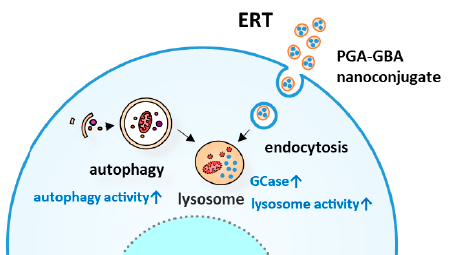Tuesday, 21 July 2020
NANO-ERT: a project developing a new nanotechnology-based therapy for Parkinson’s disease funded by BBVA
A project (NANO-ERT) aiming at applying nanotechnology to the development of a novel therapy against Parkinson’s disease, which will be carried out by a consortium including the ICN2, has been granted funding from the BBVA Foundation. This research will be led by the Vall d'Hebron Research Institute (VHIR) and will involve, besides the ICN2, the Universitat Autónoma de Barcelona (UAB).

Researchers from the ICN2 Nanostructured Functional Materials group (NANOSFUN) led by Dr Daniel Ruiz-Molina will take part in a project oriented at developing a new nanotechnology-based therapy for Parkinson’s disease, which has been recently granted 125k€ of funding by the BBVA Foundation. Called NANO-ERT, it was one of the five projects selected out of the 134 submitted to the 2019 call in the Biomedicine area.
The project, which will be coordinated by the Neurodegenerative Diseases group of the Vall d’Hebron-Institut de Recerca (VHIR) and led by Dr Marta Martínez Vicente, has been conceived in collaboration with Dr Ruiz-Molina’s group (ICN2) and the Protein Engineering and Proteomics group, headed by Dr Julia Lorenzo, of the Institut de Biotecnologia i Bioquímica (IBB-UAB).
The NANO-ERT project proposes the design and development of a new Enzyme Replacement Therapy (ERT) based on the administration of recombinant glucosylceramidase beta (GBA) protein, since it is known that the presence of mutations in the lysosomal enzyme GBA is the main genetic risk for developing Parkinson’s disease. This nanotechnology approach can improve ERT applications. In particular, the technique proposed in this project aims to increase the metabolic stability of GBA and improve its ability to cross the blood-brain barrier and reach the brain. The technology will be validated in animal models and will serve as proof of concept for the development of protein transport systems in the central nervous system, in the context of neurodegenerative diseases.
The ICN2 team, led by Dr Fernando Novio of the NANOSFUN group, will participate in the synthesis and characterization of GBA nano-formulations to improve protein stabilization, plasma protease resistance and BBB crossing. The IBB-UAB team will be in charge of performing the in vitro GBA stability, cytotoxicity and therapeutic activity in physiological conditions and the study of GBA lysosomal restorage. In turn, the role of the autophagic/lysosomal system in the metabolic and activity pathways of GBA will be the focus of the VHIR team activity. In particular, they will validate the in vitro models using model cells and cells derived from Parkinson’s Disease (PD) patients. Validation of GBA nanoconjugates will be finally tested in vivo with PD mice models.
GBA nanoconjugates are a new promising therapeutic strategy to restore neuronal GBA activity in patients affected by PD (with and without GBA mutations) as well as Gaucher patients with neurologic manifestations, since they present the same genetic mutations, while the conventional ERT is not accessible to the central nervous system (CNS). The technology derived from this project will also be a proof of concept to validate this new “nano-ERT” therapy to deliver proteins to the CNS, which could be applied in the future to other lysosomal diseases (i.e. Pompe, Fabry, Niemann-Pick,…) with neurological effects for which there is currently no therapeutic treatment available.

